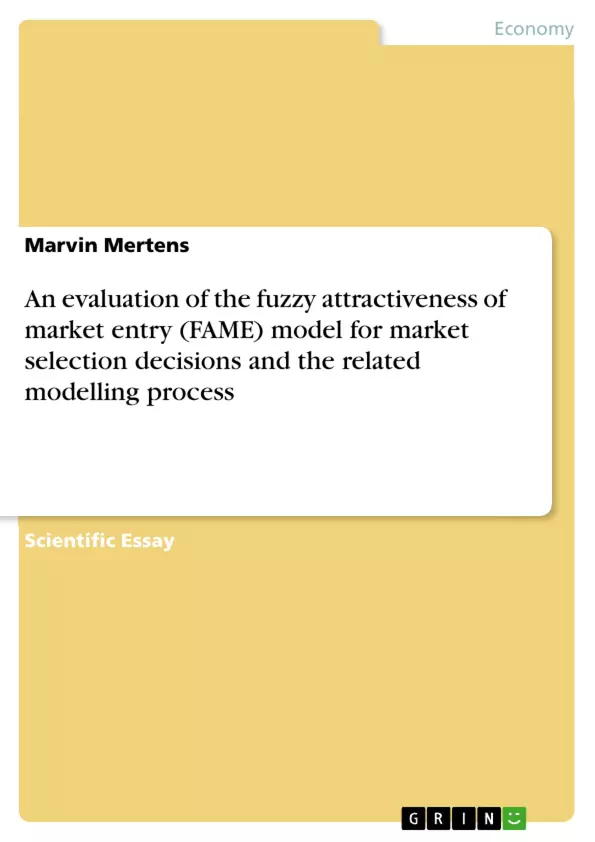This essay is concerned with a Fuzzy Attractiveness of Market Entry (FAME) model, devel-oped for the Bulgarian winery Vinprom Svishtov (VS). VS had to decide whether to expand two of its wines, a cabernet sauvignon and a chardonnay, into either a regional or a national market (Shipley et al., 2013).
The model’s purpose was to assist VS’s management in deciding whether the firm should expand two wines into a regional or a national market.
The success of the modelling exercise discussed in this essay can be assessed from two per-spectives. The first perspective relates to the question whether the model generated satisfactory results given the problem VS faced. The second perspective focuses on potential learning process on the part of VS’s management, stimulated through the modelling exercise.
Inhaltsverzeichnis (Table of Contents)
- Introduction
- Characteristics of a good model and a good modelling process
- Evaluation of the FAME model and the modelling process
- Evaluation of the success of the modelling exercise...
- References
Zielsetzung und Themenschwerpunkte (Objectives and Key Themes)
This essay aims to evaluate the Fuzzy Attractiveness of Market Entry (FAME) model, a decision-making tool developed for Vinprom Svishtov (VS), a Bulgarian winery. The FAME model was designed to help VS determine whether to expand its wine production into a regional or national market, taking into consideration the lack of historical data and leveraging expert judgment.
- Evaluation of the FAME model's effectiveness in market selection decisions
- Analysis of the characteristics of a good model and a good modelling process
- Assessment of the FAME model's strengths and weaknesses in the context of VS's specific situation
- Exploration of the role of expert judgment and fuzzy set theory in dealing with uncertainty
- Discussion of the model's impact on VS's decision-making and market entry strategy
Zusammenfassung der Kapitel (Chapter Summaries)
- Introduction: This chapter introduces the FAME model, its purpose, and the context of its development for VS's market expansion decision. It highlights the challenges of limited historical data and the reliance on expert judgment to feed the model. The key formula used in the model is presented, along with explanations of its variables and their significance.
- Characteristics of a good model and a good modelling process: This chapter delves into the criteria for evaluating the quality of a model and the modelling process. It examines the importance of addressing the specific problem, striking the right balance between detail and complexity, ensuring flexibility for adaptation, and maintaining clarity and understandability.
Schlüsselwörter (Keywords)
This essay focuses on market selection decisions, operational research, fuzzy logic, expert judgment, model evaluation, decision-making tools, and market entry strategies. It explores the FAME model's application in a real-world business context, highlighting its strengths and weaknesses in addressing the challenges of data scarcity and uncertainty.
- Quote paper
- Marvin Mertens (Author), 2015, An evaluation of the fuzzy attractiveness of market entry (FAME) model for market selection decisions and the related modelling process, Munich, GRIN Verlag, https://www.grin.com/document/287981



